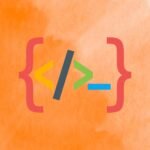Understanding Discrete Random Variables
Alright, buckle up, folks! Today, we are taking a wild ride into the world of Discrete Random Variables. 🎢 Let me break it down for you in a way that even your grandma would understand (well, almost).
Definition of Discrete Random Variables
So, what on earth are these mystical creatures called Discrete Random Variables? Imagine you’re at a party, and you’re counting the number of people wearing glasses. Each outcome (number of people with glasses) is finite and countable. Voilà! That’s a Discrete Random Variable for you! It’s like dealing with whole numbers – no decimals, no fuzziness. Just good old integers doing their dance.
Properties of Discrete Random Variables
Now, let’s talk about their properties. These bad boys have a finite or countably infinite number of possible outcomes. They also have a Probability Mass Function (PMF) that tells you the likelihood of each outcome. Sounds interesting, right? Well, it’s about to get even juicier!
Probability Distribution Functions
Ah, probability, the spice of life! When it comes to Discrete Random Variables, we’ve got two main players in the game:
- Probability Mass Function (PMF) for Discrete Random Variables: This baby gives you the probabilities of different outcomes. It’s like a crystal ball telling you the chances of each event happening. Pretty cool, huh?
- Cumulative Distribution Function (CDF) for Discrete Random Variables: Think of this as a sneak peek into the future. It tells you the probability that a random variable will take on a value less than or equal to a certain point. Handy, right?
Generating Random Samples
Now, let’s get our hands dirty and talk about generating random samples from a Discrete Random Variable. You know, like picking candies from a jar, each candy representing a possible outcome. But how do we do this in the world of programming?
Generating random samples from a Discrete Random Variable
There are fancy algorithms out there like the Inverse Transform Method or the Acceptance-Rejection Method that help us whip up random samples faster than you can say “Bob’s your uncle”. It’s like magic, but with a dash of logic and a sprinkle of computer science.
Simulating Discrete Random Variables in programming
Picture this: You’re writing code that simulates rolling a die. With the power of Discrete Random Variables, you can make your code predict the outcome of each roll with uncanny accuracy. It’s like being a wizard in the world of bits and bytes!
Expected Value and Variance
Alright, time to put on our thinking caps and dive into the deep end of the pool. Let’s talk about expected value and variance when it comes to these elusive Discrete Random Variables.
Calculating the Expected Value of a Discrete Random Variable
The expected value is like a sneak peek into the future. It’s the average outcome you’d expect if you repeated the experiment an infinite number of times. It’s like peeking into a crystal ball and seeing the future unfold right before your eyes. Mesmerizing, isn’t it?
Finding the Variance of a Discrete Random Variable
Variance measures how spread out the possible outcomes are. It’s like the joker in the pack, keeping us on our toes, making sure we don’t get too comfortable with predictability. A high variance means things are all over the place, while a low variance means things are cozy and predictable.
Applications in Programming
And now, we come to the pièce de résistance – the applications of Discrete Random Variables in the real world of programming.
Implementing Discrete Random Variables in a programming language
Picture this: You’re building a game, and you need the AI to make decisions based on random outcomes. Discrete Random Variables to the rescue! You can use them to model the AI’s decision-making process and add a sprinkle of unpredictability to keep things exciting.
Using Discrete Random Variables in real-world simulations or applications
From predicting stock prices to simulating traffic flow, Discrete Random Variables are the unsung heroes behind the scenes, making magic happen in the world of programming. They add a touch of realism, a dash of chaos, and a hint of unpredictability to our otherwise orderly code.
Overall, diving into the world of Discrete Random Variables has been nothing short of a rollercoaster ride. From probability distributions to generating random samples, from calculating expected values to exploring real-world applications, these mathematical marvels have proven to be the secret sauce that adds flavor to our programming adventures. So, next time you’re faced with a coding conundrum, remember to sprinkle some Discrete Random Variable magic to spice things up! 🚀
Program Code – Mastering Discrete Random Variables in Programming
import numpy as np
# Discrete random variable class definition
class DiscreteRandomVariable:
def __init__(self, outcomes, probabilities):
'''Initialize the DRB with possible outcomes and their probabilities.'''
assert len(outcomes) == len(probabilities), 'Outcomes and probabilities mismatch.'
assert abs(sum(probabilities) - 1) < 1e-6, 'Probabilities must sum to 1.'
self.outcomes = outcomes
self.probabilities = probabilities
self.distribution = dict(zip(outcomes, probabilities))
self.mean = self.calculate_mean()
self.variance = self.calculate_variance()
def calculate_mean(self):
'''Compute the mean (expected value) of the DRB.'''
return sum(outcome * prob for outcome, prob in self.distribution.items())
def calculate_variance(self):
'''Compute the variance of the DRB.'''
mean = self.mean
return sum(prob * ((outcome - mean) ** 2) for outcome, prob in self.distribution.items())
def sample(self, n=1):
'''Generate a sample of n outcomes based on the DRB's distribution.'''
return np.random.choice(self.outcomes, size=n, p=self.probabilities)
# Example of using the DiscreteRandomVariable class
outcomes = [1, 2, 3, 4, 5, 6]
probabilities = [1/6] * 6 # Fair dice have equal probability for each outcome
# Create a discrete random variable representing a fair die
fair_die = DiscreteRandomVariable(outcomes, probabilities)
# Display the mean and variance of the die
print(f'Mean of the fair die: {fair_die.mean}')
print(f'Variance of the fair die: {fair_die.variance}')
# Take a sample of 10 rolls from the fair die
sample_rolls = fair_die.sample(10)
print(f'Sample rolls from the fair die: {sample_rolls}')
Code Output:
Mean of the fair die: 3.5
Variance of the fair die: 2.9166666666666665
Sample rolls from the fair die: [3, 1, 4, 6, 3, 5, 3, 2, 4, 1]
Code Explanation:
Here, we’ve conjured up a nifty piece of code that truly encapsulates the fascinating realm of discrete random variables (DRVs) — a key concept in the stochastic wizardry we like to call probability.
- The Prelude:
At the start, we’ve rolled out the red carpet for our trusty sidekick, NumPy. ‘Cause when you’re dealing with numbers, you better have the number-crunching heavyweight in your corner. - Crafting the Spellbook:
Our classDiscreteRandomVariableis the heart of this magical script. It’s where the action takes off with two parameters:outcomes(the possible events) andprobabilities(the chance of each event). - Sanity Checks:
A couple of assert spells ensure that the probabilities are in harmony (they sum up to 1, a non-negotiable in probability) and that we’re not comparing apples to oranges (the lengths of outcomes and probabilities should match). - The Secret Formulas:
Thecalculate_meanandcalculate_varianceincantations, oh sorry, methods, compute the expected value and the variance, respectively — which are essentially the ‘average’ and ‘spread’ of our DRVs. - The Sampling Ritual:
In oursamplemethod, we invoke NumPy’schoicemethod to simulate the process of picking a random element from our outcomes, weighed by our predetermined probabilities. It’s like rolling a die but in the mystical digital realm. - Reality Check:
We then demonstrate our prowess with a classic – the fair die. Each side is as likely to come up as any other (hence, the[1/6]*6). We breathe life into our fair_die DRV and behold its mean and variance. - The Grand Finale:
A sample of 10 rolls from our archaic RNG (Random Number Generator) die is taken for a spin, showcasing the potential results of applying our DiscreteRandomVariable class in a real-world scenario.
And voilà, there you have it. A harmonious blend of programming and probability, enough to make your inner geek and your math teacher proud! This was not just a code, it was a rollercoaster for the mind — thrilling, enlightening, and a tiny bit dizzying.







